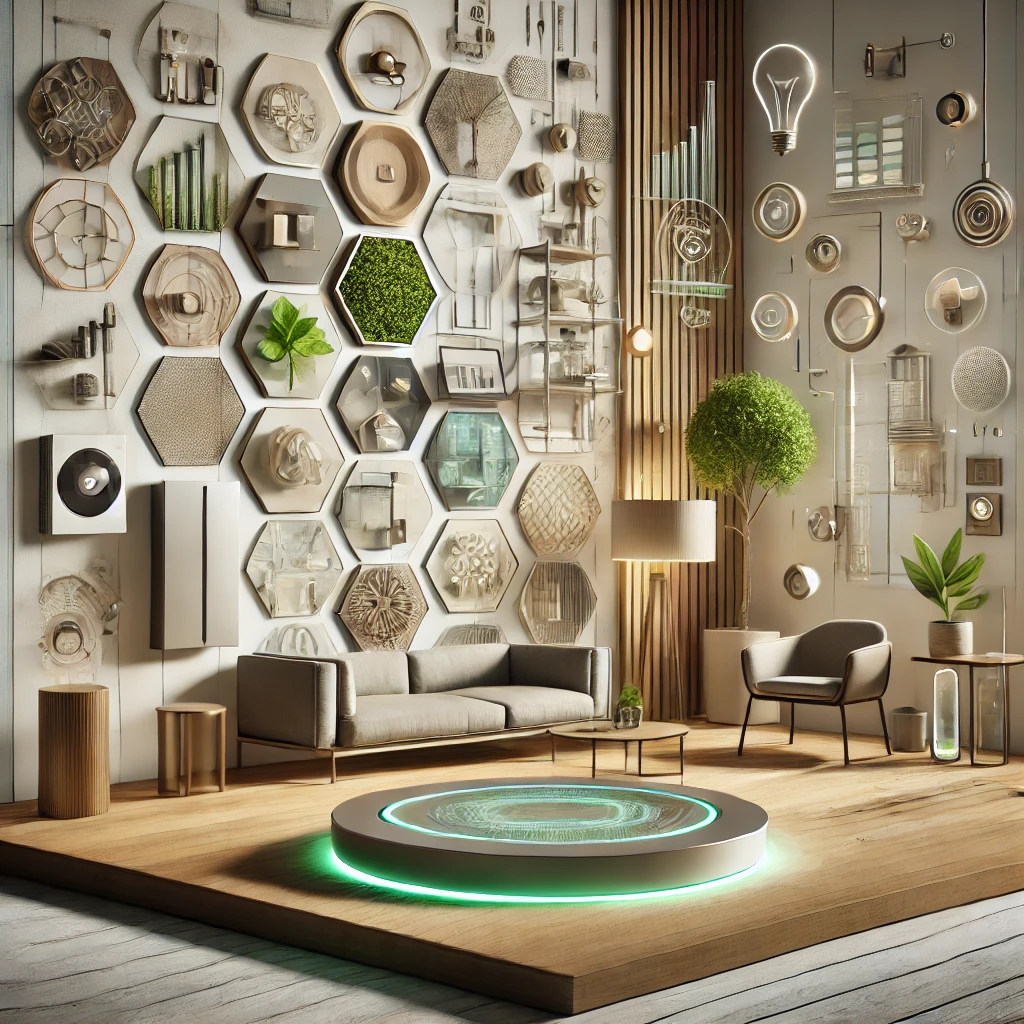
Innovative Materials and Technologies
Innovative materials and technologies in interior design play a crucial role in creating modern living spaces that combine aesthetics and functionality. Advances in technology and material science offer designers solutions that were previously unimaginable. In this article, you will explore the innovative materials and technologies used in interior design and learn how they can be applied.
1. Smart Materials
Smart materials are those that can respond to environmental changes and adapt accordingly. For example, thermochromic paints can change color based on temperature fluctuations. These materials can be used in interior design to enhance energy efficiency and provide user comfort. Additionally, light-sensitive glass can optimize sunlight, controlling the natural lighting in spaces.
2. 3D Printing Technology
3D printing technology is a groundbreaking innovation in interior design. This technology allows for the rapid and cost-effective production of various design elements, from furniture to decorative accessories. It is also ideal for creating complex and customized designs. 3D-printed pieces offer unique aesthetics in interiors and push the boundaries of design.
3. Sustainable Materials
Sustainable materials are essential for those who want to adopt an eco-friendly approach in interior design. Materials such as recycled wood, bamboo, cork, and reclaimed metals are both aesthetically pleasing and environmentally beneficial. These materials help preserve natural resources while reducing the environmental impact of design. Additionally, sustainable materials can add natural beauty and warmth to interior spaces.
4. Energy-Efficient Technologies
Energy efficiency has become a key element of modern interior design. Smart thermostats, LED lighting systems, and energy-efficient windows are among the technologies used to minimize energy consumption in spaces. These technologies reduce energy costs and lower environmental impact. Additionally, energy-efficient technologies allow users to manage their spaces more sustainably.
5. Nanotechnology and Coatings
Nanotechnology is an advanced technology used to alter the surface properties of materials. Coatings produced with this technology can be used to create stain-resistant, waterproof, or antibacterial surfaces in interiors. In kitchens and bathrooms, nanotechnology-enhanced surfaces offer significant advantages in terms of hygiene and ease of use. Moreover, these coatings increase the durability of spaces, ensuring long-lasting use.
Conclusion
Innovative materials and technologies bring together aesthetics, functionality, and sustainability in interior design. From smart materials to 3D printing, sustainable solutions to energy-efficient technologies, these innovations play a significant role in transforming modern living spaces. Designers can use these materials and technologies to create interiors that are not only visually impressive but also functional and environmentally friendly.
